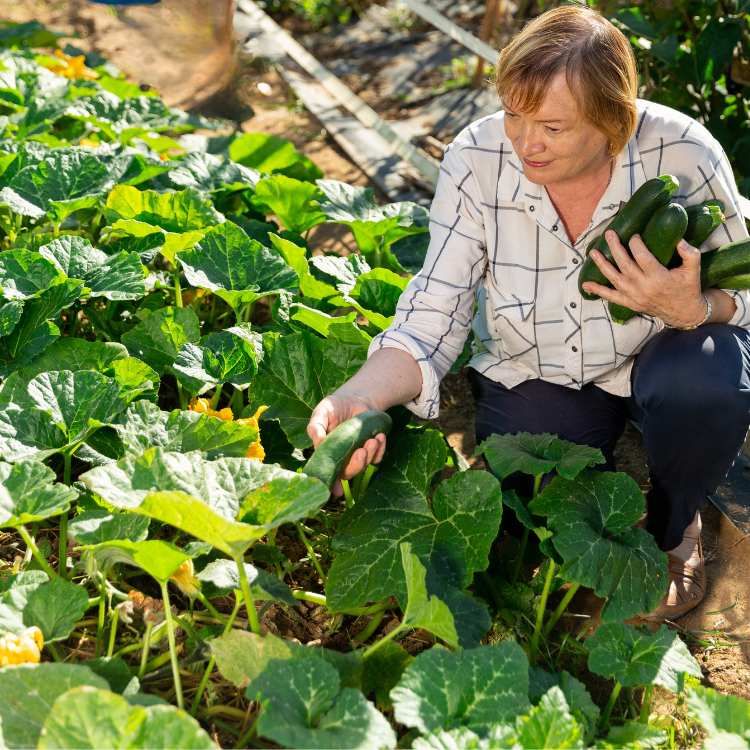
Key Takeaways
Identifying the right location for a survival garden is crucial, considering soil quality and sun exposure.
Even with limited space, container and vertical gardening can yield a substantial crop.
Essential survival crops include high-calorie staples like potatoes, corn, and beans, as well as medicinal plants.
Water management is key for garden sustainability, especially in areas with water restrictions or drought conditions.
Understanding the basics of plant care, including organic pest control and composting, will enhance your garden’s productivity.
Why Homesteading Is More Than a Trend
When we talk about homesteading, we’re talking about a way of life that’s been around for centuries. It’s about being self-reliant, making the most of your resources, and taking control of your food supply. Nowadays, with concerns about food quality and the environment, more people are turning to homesteading not just as a hobby, but as a lifestyle choice that brings them closer to nature and their community.
The Connection Between Gardening and Self-Reliance
Gardening is at the heart of homesteading. It’s not just about planting seeds; it’s about nurturing growth, understanding the cycles of nature, and harvesting the rewards of your labor. When you grow your own food, you’re taking a big step towards self-reliance. You know exactly what’s going into your soil and onto your table. Most importantly, you’re learning skills that will serve you for a lifetime.
Choosing the Right Plot for Your Survival Garden
Finding the perfect spot for your garden is the first step towards a bountiful harvest. You’ll want to look for a place that gets plenty of sunlight—at least six hours a day. You also need to consider the quality of the soil. Is it rich and loamy, or does it need some work? Don’t worry if it’s not perfect; with a bit of effort, most soil can become a fertile ground for your plants.
Assessing Soil Quality and Sun Exposure
Soil quality is everything. If you’re not sure about yours, take a sample to your local extension office for testing. They can tell you what nutrients your soil has in abundance and what it’s lacking. As for sun exposure, observe your chosen spot throughout the day to ensure it gets the full amount of sun your plants will need to thrive.
Maximizing Small Spaces: Container and Vertical Gardening
Don’t have a lot of land? No problem. Containers and vertical gardening are fantastic solutions for small spaces. You can grow herbs, lettuce, and even tomatoes right on your porch or balcony. Use hanging baskets, trellises, and stackable planters to take advantage of vertical space. Besides that, these methods can also add a decorative touch to your home.
For example, a simple wooden pallet can be transformed into a vertical garden for strawberries or herbs, making efficient use of space and providing a lush green wall of tasty, nutritious plants.
Irrigation Techniques for Drought Conditions
Water is the lifeblood of any garden, and in times of drought, managing this precious resource becomes even more critical. The key is to use water wisely. Drip irrigation systems deliver water directly to the base of the plant, which minimizes evaporation and waste. Another technique is to water early in the morning or late in the evening when temperatures are cooler, reducing evaporation.
Mulching is another vital strategy. It helps to retain moisture in the soil by preventing it from evaporating too quickly. Organic mulches like straw or wood chips not only conserve water but also add nutrients to the soil as they break down. For those living in areas with strict water usage regulations, consider planting drought-resistant crops that require less water.
Collecting rainwater is a great way to supplement your water supply. Check local regulations first, as some areas have restrictions on rainwater harvesting. If it’s allowed, setting up rain barrels is a straightforward way to capture and store water for your garden’s use.
Nurturing Your Garden: Basics of Plant Care
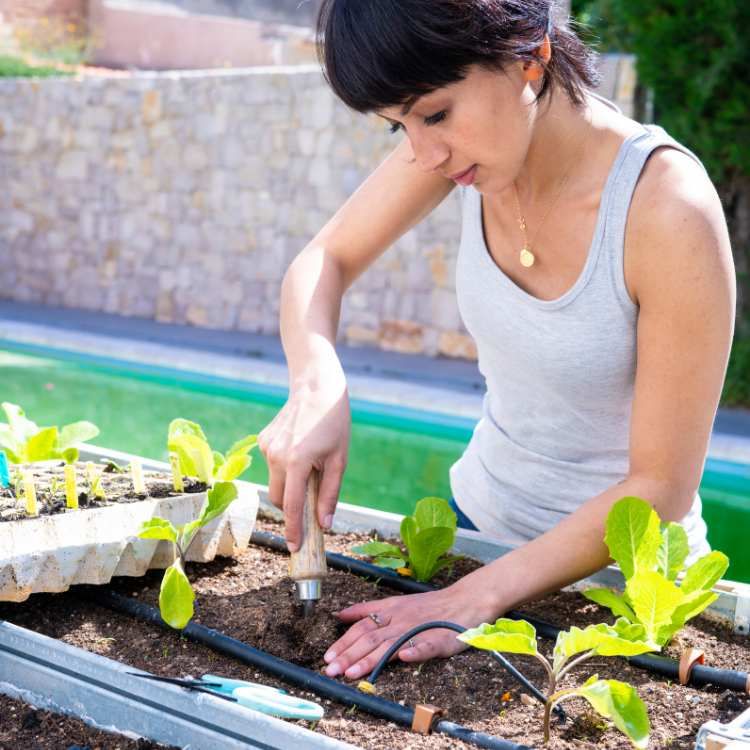
Once your garden is planted, your focus will shift to nurturing your plants. Regular weeding is necessary to prevent unwanted plants from competing with your crops for nutrients and water. It’s also important to be on the lookout for signs of stress in your plants, such as wilting leaves or stunted growth, which could indicate a need for more water or nutrients. For those new to gardening, consider following a 7-day guide for strong survival gardens to ensure your seedlings develop into robust plants.
A consistent schedule for watering, weeding, and monitoring your plants will go a long way in ensuring a healthy garden. And remember, the best time to deal with problems in your garden is before they start. Preventative measures like proper spacing to improve air circulation can help prevent disease.
Organic Pest Control Solutions
Pests can be a major challenge, but reaching for chemical solutions can compromise the integrity of your organic garden. Instead, opt for natural pest control methods. Introduce beneficial insects like ladybugs and lacewings, which feed on common pests such as aphids. Planting marigolds can also help deter nematodes and other pests.
Another effective method is to use barriers, such as row covers, to physically protect plants from insects. And don’t forget about the simplest solution: hand-picking pests off your plants. It’s time-consuming, but it’s also one of the most direct and chemical-free ways to deal with invaders.
The Role of Composting in Soil Fertility
Did you know that kitchen scraps and yard waste can be transformed into “black gold” for your garden? Composting is a simple process that enriches the soil and reduces the need for chemical fertilizers.
Start by setting up a compost bin where you can toss in organic matter like vegetable peelings, coffee grounds, and grass clippings. Over time, these materials break down into a rich, dark substance that your garden will love. Not only does compost provide essential nutrients for plants, but it also improves soil structure, which helps retain water and support healthy root growth.
By composting, you’re not just feeding your plants; you’re also reducing waste and contributing to a healthier environment. It’s a win-win for you and the planet.
Gathering and Storing Your Abundance
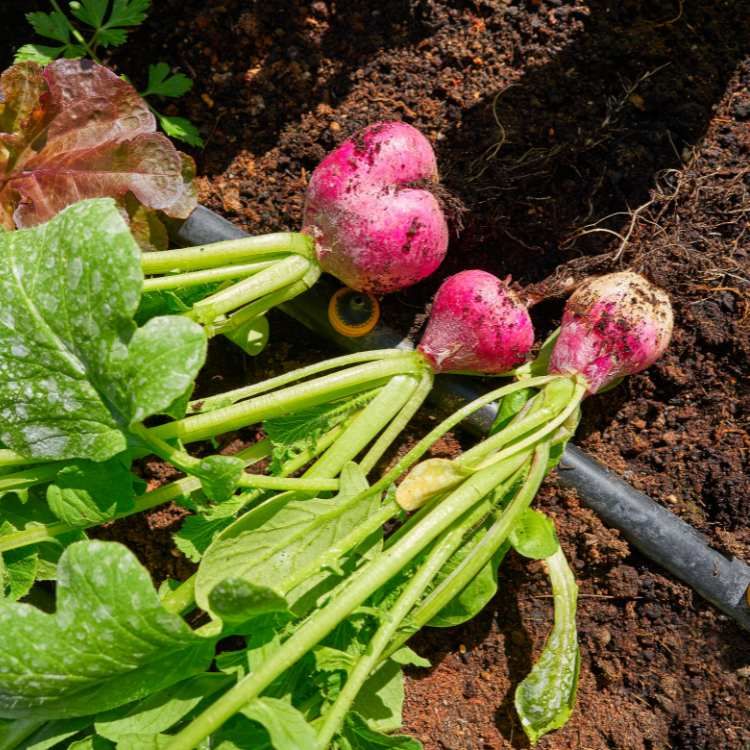
As your garden matures, you’ll be rewarded with an abundance of fresh produce. To ensure you’re getting the most out of your harvest, pick fruits and vegetables when they’re ripe. This is when they’re at their peak in terms of flavor and nutritional value.
When and How to Harvest for Peak Freshness
Most vegetables are best harvested in the morning when their water content is highest. For example, leafy greens should be picked before they start to wilt in the afternoon sun. Root vegetables like carrots and potatoes can be dug up as needed, or all at once and stored in a cool, dry place.
Food Preservation Techniques: Canning, Drying, and Fermentation
Preserving your harvest allows you to enjoy the fruits of your labor year-round. Canning is a popular method for preserving all kinds of produce, from tomatoes to green beans. Drying herbs and vegetables is another simple way to extend their shelf life. And fermentation, which can be used for making pickles or sauerkraut, not only preserves your produce but also enhances its nutritional value.
With these techniques, your pantry will be stocked with healthy, homegrown food, giving you a sense of security and accomplishment that comes with self-reliance.
Seed Saving: The Heart of Continued Growth
One of the most empowering aspects of gardening is the ability to save seeds from your plants for future planting. This practice not only saves money but also helps preserve genetic diversity and plant resilience.
Simple Steps to Save Seeds from Your Garden
When saving seeds, select the healthiest and most vigorous plants as your seed sources. Allow the plant to go to seed and wait until the seeds are fully mature before harvesting. Clean the seeds and dry them completely to prevent mold. Then store them in a cool, dry place until you’re ready to plant them next season.
Storing Seeds for Future Planting Seasons
Proper storage is key to maintaining seed viability. Use envelopes, jars, or airtight containers to keep seeds dry. Label them with the date and type of seed. Some seeds can last for several years if stored correctly.
By saving seeds, you’re not just planning for next year’s garden; you’re contributing to a tradition of sustainability and self-sufficiency that can be passed down through generations.
Plan, Prepare, and Persevere: Setting Realistic Goals
Embarking on the journey of homesteading and gardening requires planning, preparation, and perseverance. Start with a manageable plan, perhaps focusing on a few key crops that are known to do well in your area. As you gain experience, you can expand your garden and try new things.
Most importantly, remember that every gardener makes mistakes. What sets a successful gardener apart is the ability to learn from those mistakes and keep moving forward. Your garden is a living, changing ecosystem that will grow with you over time. Embrace the journey, and enjoy the rewards of your hard work.
Plan, Prepare, and Persevere: Setting Realistic Goals
Embarking on the journey of homesteading and gardening requires planning, preparation, and perseverance. Start with a manageable plan, perhaps focusing on a few key crops that are known to do well in your area. As you gain experience, you can expand your garden and try new things. For more detailed guidance, consider reading about essential tips for survival seed selection to ensure your garden thrives.
Most importantly, remember that every gardener makes mistakes. What sets a successful gardener apart is the ability to learn from those mistakes and keep moving forward. Your garden is a living, changing ecosystem that will grow with you over time. Embrace the journey, and enjoy the rewards of your hard work.
Equip Yourself with Top-Quality Seeds
For your survival garden to flourish, it’s essential to start with high-quality seeds. The seeds you choose should be well-suited to your climate and soil conditions, and they should come from a reliable source to ensure good germination rates.
When selecting seeds, consider opting for heirloom varieties. These seeds have been passed down through generations and are often more flavorful and nutritious than their commercial counterparts. They are also more likely to be open-pollinated, which means you can save seeds from your harvest and plant them again next year, continuing the cycle of self-reliance.
Finding Reliable Seed Suppliers
When it comes to finding reliable seed suppliers, do your research. Look for companies that are transparent about where their seeds come from and how they are grown. Check for reviews from other gardeners, and see if the company is committed to sustainable practices.
It’s also beneficial to choose suppliers that offer a wide variety of seeds, including rare or unusual varieties. This diversity can make your garden more resilient and your meals more interesting.
Your Next Step: Expand Your Garden with Survival Essentials
Once you’ve mastered the basics, it’s time to expand your garden. Survival Essentials offers a wide selection of heirloom seeds that can help take your garden to the next level. From high-calorie staples to medicinal herbs, their collection has everything you need to enhance your self-reliance.
Visit Survival Essentials to explore their offerings and equip yourself with the finest seeds to ensure your family’s food security when disasters strike.
FAQs
Here are some frequently asked questions to help you get started on your journey to self-reliance through survival gardening.
What Are the Best Vegetables to Grow for Beginners?
For beginners, it’s best to start with vegetables that are easy to grow and require minimal maintenance. Some of the best options include:
Lettuce and other leafy greens, which grow quickly and can be harvested multiple times.
Radishes, which are one of the fastest vegetables to grow from seed to harvest.
Tomatoes, which can be grown in containers or in the ground and are incredibly versatile in the kitchen.
Peppers, which come in many varieties and can be used in a wide range of dishes.
Zucchini, which is prolific and can produce a large yield from just a few plants.
How Much Land Do I Need to Start a Survival Garden?
You don’t need a lot of land to start a survival garden. Even a small plot of land or a few containers on a balcony can provide a significant amount of food. The key is to make the most of the space you have through efficient planting techniques like square foot gardening or vertical gardening.
Can I Rely Solely on Rainwater for My Garden?
Depending on your location and the local climate, it may be possible to rely solely on rainwater for your garden. However, it’s important to have a backup plan, such as a rain barrel system or drip irrigation, in case of drought. Always check local regulations regarding rainwater harvesting before setting up your system.
What Are Some Common Mistakes in Survival Gardening?
Some common mistakes in survival gardening include not understanding the art of survival gardening techniques and tips, which can greatly impact the success of your food production efforts.
Encourage beneficial insects by planting a variety of flowers and herbs.
Use physical barriers, such as row covers, to protect plants from pests.
Practice companion planting to deter pests and attract beneficial insects.
Maintain healthy soil through regular composting and mulching, which can help prevent disease.




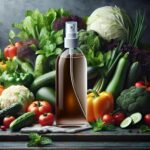
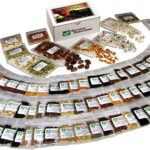

Leave a Reply